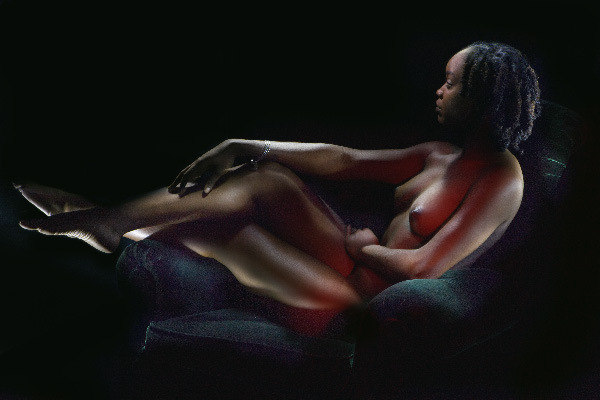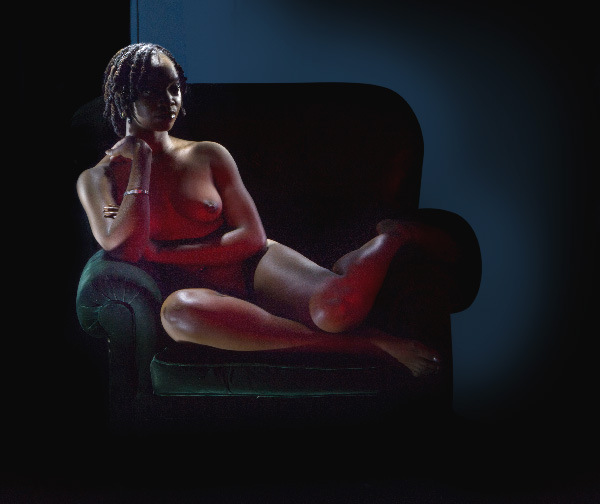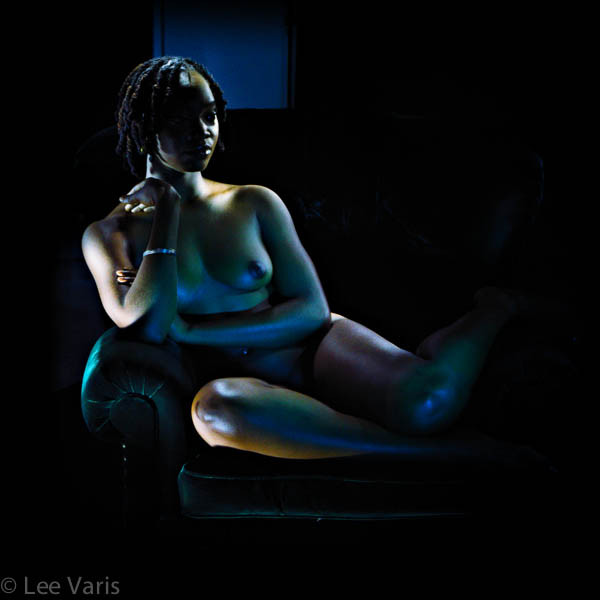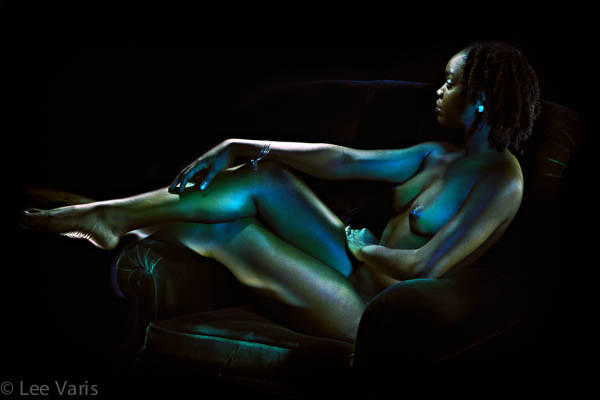Photography
Light Painting the Nude.
Light Painting the Nude
By Lee Varis
As some of you may know, I have been teaching workshops on still life photography using a special lighting technique I call “Lighting in Layers,” where separate exposures with different lighting directions are combined to create one image. Of course, this technique is especially well suited to objects that don’t move, but everyone always asks if you can use this technique with people. Well… yes, you can, and I recently had the opportunity to prove it in a workshop setting at FOTOfusion 2014, this past January. I conducted a studio lighting workshop for light painting the nude, the first time I’ve taught this particular workshop, and everything turned out great.

This image was the result of several separate exposures with light “painted-on” using a small led flashlight.
The process I teach, allows for complete flexibility and control over the lighting color, intensity, and direction. The results transcend the sum of their parts to create stunning lighting that literally cannot be achieved any other way.

The light painting technique requires the model to remain motionless during and in-between exposures.
Your subject has to remain motionless, during and in-between the separate exposures.This can be facilitated by careful posing on over-stuffed chairs and couches. This allowed for the necessary comfort and support to keep most of the figure still during 6-second exposure “passes” with a small LED flash light. During my FOTOfusion workshop, I had a group of 9 photographers, assembled in front of the model, cameras set on manual w/ ƒ11-16 @ 6 seconds. I counted out “1, 2, 3…” they would all open their shutters, and I would “paint” light onto the model. Each pose received several different “passes” with the flashlight illuminating different parts of the body. I often start with a very soft overall light that will become the “base” ambient fill. The Westcott Ice Light is ideal for this, but all of the other, more dramatic lighting comes from small inexpensive LED flashlights!
Once you have your separate exposures, you assemble each exposure file into Photoshop layers, and change the blend mode to either lighten or screen to build up the exposure, from the bottom layer up, until you have the effect you want.

This image used 16 layers, including the blank “Background” layer and a Hue/Saturation adjustment layer to colorize the couch a bit.
This lighting technique has an almost unlimited set of applications for static subjects and is well worth exploring, especially since it does not require expensive or exotic lighting gear! In addition, it is easy to generate variations by changing the color of individual lighting layers or using slightly different exposures – here are a couple of variations of the first two shots:
——
To see a more detailed blog post on this process, go to Lee’s blog post here.
You can find some other blog posts on the subject of lighting in layers here.
Lee has two classes on Photoshop at the Picture Perfect School of Photography, an online photo school with 4-week classes, assignments, and critiques for just $169:
Photoshop Layers Fundamentals
Portrait Retouching Fundamentals

